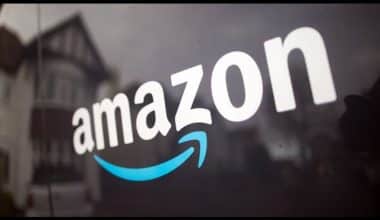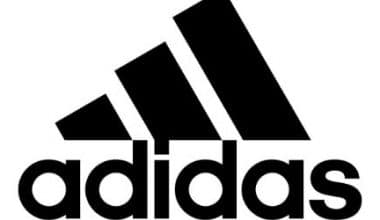Purdue University’s basic identity components include the wordmark, seal, institutional colors, typefaces, and logos. In this article, we’ll discuss the history and evolution of the Purdue logo, as well as how to make a citation using the university’s OWL. As we’ll see in this article, Purdue also has a thriving basketball team.
History and Significance of The Purdue Logo
Prior to 2018, Purdue had a tradition of allowing academic and administrative units to change the main wordmark by substituting the words “University” with the unit’s name. However, the school’s design staff subsequently concluded that this had a negative impact on the visual integrity of the logo, so these versions are no longer permitted to be used officially.
Purdue University is the name of an American educational institution founded in 1869 in Indiana. Today, the public research university in West Lafayette has almost 50,000 students and over 3,000 academic staff. The engineering program at Purdue University is well-known.
Elements Of The Purdue Logo Design
Symbol
Purdue’s main logo has the word “Purdue” in black above the word “University” in gold. A gold horizontal line separates the two halves of the logo. Both are given in caps and in a highly legible serif typeface.
Seal
The seal was first used to commemorate the school’s 100th anniversary in 1969. Although the design was unique, it combined elements of old emblems used throughout the university’s history without gaining the rank of an official symbol.
The Purdue University logo features a griffin, a symbol of strength drawn from medieval heraldry, and a three-part shield. Each component has its own meaning; they represent education, research, and service.
Athletic logo
The Purdue Boilermakers’ old logo is all about trains. In the 1983 edition, for example, a black train overlays a gold rhombus. The following logo, established in 1996, features a modified train that is without the rhombus.
In 2003, the institution abandoned the elaborate insignia in favor of a simpler “P” design. That is exactly what their helmets currently depict. There have also been mascot emblems and wordmarks.
Purdue Boilermakers Football
Purdue University’s football program dates back to 1887 when it was established. Jeff Brohm is the current head coach. Home games are held at Ross-Ade Stadium. The team competes in collegiate football’s NCAA Football Bowl Subdivision.
Parke Davis, an NCAA-designated major selector, chose the Boilermakers as national champions retroactively in 1931. They’ve competed in 19 bowl games.
The Purdue Logo Font
Purdue University has a number of suggested fonts. However, the official Purdue logo rules make no reference to the sort of wordmark used. As a result, it makes sense to regard the Purdue logo as an original artwork rather than attempting to replicate it using any of the available fonts.
Color of the Purdue Logo
The primary palette of the Purdue University logo consists of only two colors: old gold (Hex Code: #C28E0E) and black. Several other colors can be used to complement the two institutional hues. According to the University’s official explanation, the main colors were chosen to “reflect the historic hammer-and-anvil strength of Boilermakers and other brilliant blacksmiths.”
Can I Use The Purdue Logo?
The Purdue logo may only be used with a license or permission issued by the University. The unauthorized use of the Purdue logo is strictly banned.
Purdue University Information
Purdue University is a public land-grant research university in West Lafayette, Indiana, and the system’s flagship campus. In 1869, Lafayette businessman John Purdue gave land and funds to build a college of science, technology, and agriculture in his honor. On September 16, 1874, the first sessions were held, with six instructors and 39 students. It has been named by major institutional rankings as one of the greatest public institutions in the United States, and it is well-known for its engineering curriculum.
The main campus in West Lafayette provides over 200 undergraduate majors, over 70 master’s and doctoral programs, and professional degrees in pharmacy, veterinary medicine, and doctor of nursing practice. Purdue also boasts 18 intercollegiate sports teams and over 900 student clubs. Purdue is a Big Ten Conference founding member and has the largest student body of any individual university campus in Indiana. This is in addition to having the ninth-highest foreign student population of any university in the United States.
The University is a member of the Association of American Universities and is classified as “R1: Doctoral Universities—Very high research activity.” Purdue faculty, students, alumni, and other affiliates have risen to positions of prominence and influence in business, media, politics, and science. Purdue has had 13 Nobel laureates, one Turing Award laureate, two World Food Prize laureates, three Pulitzer Prize winners, 18 Olympic medalists, three National Medal of Technology and Innovation recipients, two National Medal of Science recipients, three Presidential Medal of Freedom recipients, seven members of Congress, three U.S. governors, and two heads of state as alumni. The University has nearly 400,000 live alumni. Its graduates include 26 astronauts, six current Fortune 500 CEOs, two Rhodes Scholars, four Truman Scholars, and three Gates Scholars.
Integration
Purdue had black graduates by the 1890s, and a black man ran for the track team in 1905. However, the teams became divided somewhere in the 1910s and stayed so until a student protest in 1947. Until the 1940s, black students were not permitted to live in resident halls. Black males could live in cooperatives, but black females were barred from living anywhere in West Lafayette. The governor of Indiana issued an order integrating the women’s dorms in 1946.
In 1968, Helen Williams became the university’s first Black faculty member.
Campuses
Purdue’s campus is located in West Lafayette, near the western bank of the Wabash River, which divides the larger city of Lafayette. State Street, which runs parallel to State Road 26, separates the northern and southern halves of campus. Academic buildings dominate the eastern and southern hemispheres of campus, with residence halls and intramural fields to the west and sporting facilities to the north. The Greater Lafayette Public Transportation Corporation (CityBus) runs eight campus loop bus routes that students, teachers, and employees can use for free with their Purdue ID.
South Campus
Purdue’s agriculture, fine arts, life sciences, and veterinary facilities are located south of State Street. The Krannert School of Management, Horticulture Gardens, Discovery Park, Lyles Porter Hall, and the Purdue Airport are also located in this region. Both undergraduate and graduate degree programs at the Krannert School of Management have been nationally and globally ranked. The majority of business classes on campus are held in Krannert and Rawls Halls, which provide cutting-edge learning facilities. Rawls Hall was created in 2006 with the support of Jerry S. Rawls’ $10 million gift, the largest in the management school’s history.
Lyles Porter Hall provides interdisciplinary healthcare facilities and classroom space for the College of Health and Human Sciences, as well as the Indiana University School of Medicine’s West Lafayette branch. Within this cutting-edge interdisciplinary healthcare center, students and clinical instructors from Nursing, Health and Kinesiology, Nutrition Science, Psychological Sciences, and Speech, Language, and Hearing Sciences see around 3,000 patients per year. A nursing clinic, specialized preschool, exercise center, consultation space and demonstration kitchen for dietitians in training, clinical psychology facility, audiology and speech-language pathology clinics, cadaver laboratory for physicians in training, and research laboratories are all part of the building.
Purdue University Airport was originally built in 1930. It was the first of its kind and is still one of the country’s few university-owned airports. The facility, which includes the Niswonger Aviation Technology Building, which was dedicated in 2009, represents Purdue’s long history with aviation.
West Campus
Student accommodation, eating, and recreation facilities are located in the western part of campus. Club and intramural sports are available in the Córdova Recreational Sports Center, the Morgan J. Burke Aquatic Center (named for former Purdue Men’s Swimming & Diving Captain and longtime Vice President & Athletics Director Morgan J. Burke), and the intramural playing fields in this region. The Córdova Recreational Sports Center, which opened in 1957, was the first structure in the country designed specifically to meet the recreational needs of university students. It was originally known as the “Co-recreational Gymnasium” since it replaced the previously separate women’s and men’s gymnasiums. Despite multiple expansions and formal name changes, it has always been referred to as “the Co-rec.”
Administration and Organization
The university president, who is appointed by the board of trustees, is the university’s chief administrative officer. The president’s office is in charge of admission and registration, student conduct and counseling, the administration and scheduling of classes and space, the administration of student athletics and organized extracurricular activities, the libraries, the appointment of faculty and their working conditions, the appointment of all non-faculty employees and their working conditions, the general organization of the university, and the planning and administration.
Other important university executives are directly appointed by the Board of Trustees. These include a provost who acts as the institution’s main academic officer, various vice presidents who oversee specialized university functions, and regional campus chancellors.
Academics
Purdue University has over 211 primary fields of study and offers both undergraduate and graduate degrees. It is well known for its competitive engineering curricula. The university was also instrumental in establishing the first college credit granted in flight training, the first four-year bachelor’s degree in aviation, and the first university airfield, Purdue University Airport. Purdue’s aviation technology and aeronautical engineering programs continue to be among the most competitive in the world. Purdue’s aviation department expanded to include advanced spaceflight technology in the mid-twentieth century, earning the university the nickname Cradle of Astronauts and Mother of Astronauts. Gus Grissom, one of the original Mercury Seven astronauts; Neil Armstrong, the first person to walk on the moon; and Eugene Cernan, the final person to walk on the moon, are all Purdue grads.
Purdue University’s English department established the first Online Writing Lab (OWL) in 1994. Many schools and universities use the Purdue OWL website as a resource for proper word usage, punctuation, grammar, and style in academic writing.
Purdue University is divided into ten colleges and schools. The College of Health and Human Sciences was established on July 1, 2010, by combining existing academic units such as the School of Nursing, the School of Health Sciences, the College of Consumer and Family Sciences, and non-humanities majors psychology and hearing and speech pathology from the College of Liberal Arts.
Purdue Online
Purdue has a growing online presence, in addition to Purdue Global, through Purdue Online, the administrative unit charged with planning and enabling the effort, offering more than 200 programs through the university’s four accredited institutions (Purdue West Lafayette, Purdue Northwest, and Purdue Fort Wayne in Indiana, and Purdue Global), including master’s degree programs. The unified online education initiative approved by Purdue President Mitch Daniels and the Purdue Board of Trustees in December 2018, aims to radically expand these offerings by developing a “coordinated, unified system-wide portfolio of online course and degree offerings for students of all types.”
The Student Body
Purdue University had 8,562 students from 126 countries attend in 2012. In 2012-13, 19,689 of the 39,256 students enrolled were Indiana citizens. In 2013, the racial diversity of the undergraduate student body in the United States was 5.7% Asian, 4.4% Hispanic or Latino, and 4.0% black or African American. Domestic minorities make up 10.8% of the graduate student population, with 37.3% of them being female. International students make up about 22% of the student body, representing 126 nations. Non-Indiana residents make up roughly 75% of the graduate and professional student population. Almost all undergraduates and over 70% of graduate students attend full-time. According to USNWR, the school’s admissions process is “more selective”: around 49% of applicants get admitted.
Events and activities
Purdue students are involved in over 900 student organizations covering a wide range of interests. The Purdue Reamer Club (a school spirit organization that cares for the Boilermaker Special mascot and raises funds for scholarships) and two clubs that eventually became national organizations: the National Society of Black Engineers and the Rube Goldberg Machine Contest, were both founded by Purdue students.
The Purdue Alumni Student Experience (part of the Alumni Association), the Purdue Student Union Board, the Purdue Student Government (PSG), and the Purdue Graduate Student Government all plan campus-wide events (PGSG). PSG and PGSG are composed of representatives from each of the university’s academic colleges. They provide recommendations to the faculty, administration, and, on occasion, the state legislature.
Boiler Gold Rush, Purdue University Dance Marathon, Spring Fest, and Grand Prix are all annual campus activities. Purdue’s new-student orientation program is called Boiler Gold Rush (BGR). BGR, which takes place before each fall semester, was created to help incoming students adjust to college life and become acquainted with successful college life. Speaker presentations from various academic, cultural, safety, and professional organizations on campus, campus tours led by Team Leaders, academic meet the schools’ picnic and interest sessions, late-night events at the Purdue Memorial Union, Recreational Sports Center, and local stores, and a sports pep rally are among the Boiler Gold Rush activities.
What Is Purdue University Famous For?
The university is primarily renowned for its excellent engineering school. However, it also offers a wonderful nursing program, a great pharmacy program, and a speech pathology program [that] is one of the best.
Is Purdue A Top University?
Purdue University ranks #51 out of 443 National Universities. This ranking is done according to the performance of the schools across a set of widely accepted indicators of excellence.
What Is The GPA To Get Into Purdue?
3.0 GPA or higher. No individual grade less than B. Students meeting requirements will be accepted on a space-available basis.
Do Purdue Students Ride The Bus For Free?
Purdue students, professors, staff, and retirees with a valid Purdue photo ID can ride for free on CityBus. All Campus Loop and regular route buses operated by CityBus in Lafayette and West Lafayette are free of charge.
Purdue OWL
Purdue University’s Online Writing Lab (OWL) houses writing tools and instructional material, which we provide as a free service of the Purdue Writing Lab. Students, community members, and users from all around the world will find information to help them with a variety of writing projects. This content can be used by teachers and trainers for both in-class and out-of-class teaching.
The Mission of The Purdue OWL
With on-campus consultations, online participation, and community engagement, the Purdue University Writing Lab and Purdue Online Writing Lab (OWL) aid clients in their development as writers, regardless of ability level. The Purdue Writing Lab supports the Purdue University West Lafayette campus and collaborates with local literacy efforts. The Purdue OWL provides global assistance via online reference materials and services.
Correct Citation Using Purdue OWL
Citation guides are available on the Purdue Online Writing Lab’s website:
- Choose the Online Writing Lab.
- Select “Research and Citation” from the menu on the left.
- This brings up a drop-down menu containing commonly used citation styles (APA 6th and 7th Editions, MLA, Chicago, IEEE, AMA, and ASA)
- MLA, APA, and Chicago are the three most used citation styles. Choose your preferred style from the drop-down menu, then click the “Formatting and Style Guide” tab.
All three styles include the following:
- “General Format” tab, demonstrating how to format a title page/header and sections/headings as needed. Please keep in mind that APA has a distinct headers tab.
- Books, Periodicals, and Electronic/Web Sources tabs. These include Book—author-specific concerns, for example, A text may have no known author or several authors, quoting multiple texts by the same author, and so on. Newspapers, magazines, and scholarly journals are examples of periodicals. Websites, e-books, emails, social media, and other electronic/web sources should be cited.
- Sample papers with formatting notes, especially useful for visual learners
MLA and APA both use in-text citations, which have their own tabs separate from the Works Cited and Reference List tabs (MLA) (APA). Endnotes or footnotes are used in Chicago, and these regulations are included with the bibliographic entry rules in each source tab stated above.
Where can I learn how to cite?
- Presentations, speeches, and lectures
- Other Non-Print Sources (APA)
- Various Sources in Chicago
- Music, movies, and television
- APA—Audiovisual Media Association
- Audiovisual Recordings and Other Multimedia in Chicago
- Artwork
- APA—Audiovisual Media Association
Purdue Basketball
The Purdue Boilermakers are a college basketball team that plays in NCAA Division I and is a member of the Big Ten Conference. Purdue basketball has won the most Big Ten titles, with 24. The Boilermakers have made two NCAA Tournament Final Four appearances but have yet to win an NCAA Championship. The Helms Athletic Foundation and the Premo-Porretta Power Poll declared the 1931-32 team a national champion retroactively. Purdue has sent more than 30 players to the NBA, including two first-round picks. Purdue’s major rivalry is with the Indiana Hoosiers.
History Of The Purdue Basketball
The early years, 1896-1916
Purdue basketball dates back to 1896 when they played their first game versus the Lafayette YMCA. During the 1902-03 season, head coach C.I. In his single season, Freeman led them to an unblemished 8-0 record. After the season, the university recognized the sport’s popularity and added it to the Purdue University Athletic Association. Three years later, the Boilermakers joined the Big Ten Conference, winning their first championship under Ralph Jones in 1911.
1917-1946: Ward Lambert’s reign
Ward “Piggy” Lambert, a former Wabash College basketball player, was named head coach of the Boilermakers in 1917. What followed was one of Purdue Basketball’s most dominant eras on both the conference and national levels. Purdue became a forerunner in the creation of the fast-paced game that it is today under Lambert. Lambert coached 16 All-Americans and 31 First Team All-Big Ten honors in 28 seasons, including National Player of the Year John Wooden in 1932.
Wooden was the first college player to be selected as a three-time consensus All-American. Lambert finished his career with a 371-152 record and a.709 winning percentage. Only Indiana’s Bob Knight and former Purdue head coach Gene Keady have more Big Ten wins than him. Lambert won an incredible 11 Big Ten titles, tying Bobby Knight for the most in conference history. Purdue was named the Helms Athletic Foundation’s 1932 national champion retroactively in 1943. The Premo-Porretta Power Poll later named the Boilermakers national champions in 1932 as well.
Ray Eddy era, 1950-1965
On January 23, 1946, Ward Lambert announced his retirement. Purdue won both matchups against John Wooden’s Indiana State team that year and the year after under new head coach Mel Taube. Three students were murdered (one died the next day) and 166 people were evacuated to hospitals on February 24, 1947, when the 3,400-student section of the Purdue Fieldhouse collapsed during a game against Wisconsin.
In 1947, center Paul Hoffman became the only Boiler to be named to the Big Ten First Team four times. With third overall-picked teammate Ed “Bulbs” Ehlers (who played for John Wooden at South Bend Central High School), the two were the first players in the program’s history to be selected in the NBA draft, while Paul Hoffman became the BAA’s (original title of the NBA) first player named Rookie of the Year in 1948.
After Mel Taube’s four-and-a-half seasons, Ray Eddy, a former player, and teammate of Wooden’s under Lambert took over as head coach. During his 15-year tenure, he coached Terry Dischinger and Dave Schellhase, both Consensus All-Americans, and Ernie Hall, the first Purdue junior college transfer and African-American player to wear a Boilermaker uniform. In 1955, his team played one of the longest games in collegiate basketball history, reaching six overtime in a loss to Minnesota.
George King’s reign, 1966-1979
The Boilermakers would enjoy moderate success over the next few decades, culminating in 1969 when they won their first conference title in 29 years and advanced to the 1969 NCAA Finals game under head coach George King and led by All-American Rick Mount, where they were defeated by former Purdue great John Wooden and his UCLA Bruins squad. Fred Schaus, a former Los Angeles Lakers coach/general manager who also served as West Virginia’s head coach, took over the program after George King stepped down to become the school’s lone athletic director. Schaus led the Boilermakers to the 1974 NIT Championship, making them the first Big Ten team to do it. In the 1978–79 season, new head coach Lee Rose introduced a slowed-down, controlled style of play to Purdue basketball. He guided them to the 1979 NIT Finals and an NCAA Final Four trip with All-American center Joe Barry Carroll.
Gene Keady era, 1980-2005
Gene Keady was named the Boilermakers’ new head coach in 1980. He was the head coach of Western Kentucky and a former assistant to Eddie Sutton of the Arkansas Razorbacks. Keady led the Boilermakers to six Big Ten titles, 17 NCAA Tournament appearances, two Elite Eights, and no Final Fours over the next 25 years. Purdue had its highest Associated Press and Coaches Poll ranking in program history during the 1987-88 season when it was ranked as high as second in the country. During the 2021-2023 season, they would be ranked first in the country.
Keady and assistant coach Frank Kendrick recruited Glenn Robinson in 1991, who went on to become an All-American and Purdue’s second National Player of the Year. A few years later, Purdue recruited the first of several foreign players for the program when they signed Matt ten Dam from the Netherlands. Keady surpassed Lambert as Purdue’s all-time winningest coach in December 1997, with his 372nd victory. He also became the Big Ten’s second-winningest coach, trailing only Indiana’s Bobby Knight, with whom Keady went 21-20 in head-to-head meetings. Soon after, Mackey Arena’s playing field was renamed Keady Court in his honor.
Purdue was placed on two years probation by the NCAA following the 1998-99 season due to minor breaches in recruitment, benefits, and ethics. Purdue also lost one scholarship per season in 2000-01 and 2001-02. Most notably, Purdue assistant Frank Kendrick was discovered to have illegally supplied a $4,000 bank loan to Purdue player Luther Clay, who transferred to Rhode Island after his rookie year. Because Clay was ruled ineligible owing to his extra benefit, Purdue forfeited all 19 victories in which he appeared, including one in the 1996 NCAA tournament.
Matt Painter era, 2005-present
When the Keady period ended in 2005, the Matt Painter era began. Painter played for Keady in the early 1990s, and he was named captain in his senior year in 1993. The painter was hired as a planned replacement for Coach Keady as Keady’s assistant head coach for the 2004-05 season following one season as the head coach at Southern Illinois after Bruce Weber headed north for Illinois. After a poor first season marked by injuries and sanctions resulting from off-court incidents, Painter re-energized Purdue basketball in the summer of 2006 by signing the conference’s top recruiting class, resulting in one of the biggest turnarounds in the program’s history. His “Baby Boilers” grew into three eventual All-Americans, including JaJuan Johnson, who led Purdue to four consecutive NCAA Tournaments and back-to-back Sweet Sixteen appearances, a Big Ten title, and a conference tournament championship.
2010
Matt Painter led the Boilermakers to a school-record-tying 14-0 start in 2010, as well as the most wins in a season with a 29-6 record and a Big Ten title. Junior Robbie Hummel was sidelined with an ACL injury in February of that season. Therefore, the season ended in relative failure. With the return of Hummel, E’Twaun Moore, and Johnson, Purdue looked prepared to have one of its best seasons the following year. This excitement was quickly dashed when Hummel re-tore his ACL during the first practice of the season. Thus, forcing him to miss the rest of the season. Despite Hummel’s absence, Purdue remained in the top ten for the majority of the season, reaching as high as sixth, and finished with a 26-8 record. Johnson and Moore declared for the NBA draft at the end of the 2010-2011 season.
2011
Johnson and Moore were picked in the first and second rounds by the Boston Celtics, respectively, on June 23, 2011. Purdue opened the 2012 season with a 12-3 record. This was the fifth-longest home winning streak in the country (27), and the nation’s lowest turnover average per game. During the 2012 season, Alabama snapped the home winning streak. They finished the conference season with a 10-8 record. Thus, giving Purdue its sixth consecutive 22-win season, the best in program history. The Minnesota Timberwolves selected Robbie Hummel 58th overall in the 2012 NBA Draft. The next two seasons saw little success, with the team missing out on both the NCAA Tournament and the NIT.
2013
They accepted a bid in the 2013 CBI and fell to Santa Clara in the second round. Purdue got back on track after a mediocre 8-5 preseason record in 2015, placing third in the Big Ten after finishing last the year before. The 2015 season came to an end with an overtime loss to Cincinnati. It was the program’s first NCAA Tournament loss since 1993, snapping a 14-game winning streak.
After returning to the NCAA tournament, the program got its biggest recruit in a quarter century when Fort Wayne native and top ten recruit Caleb Swanigan de-committed from Michigan State. They started the 2016 season 11-0. Thus, setting a program record for straight double-digit victories, and were ranked as high as ninth in the US. With a 26-9 record, the season ended in an NCAA First Round loss to Little Rock. In May 2016, it was announced that the 2017–18 Purdue team would represent the U.S. at the 2017 World University Games in Taipei. The team would go on to win the Silver Medal at the Games, winning every game until losing to Lithuania in the gold medal game.
Why is Purdue Called Boilermakers?
Purdue defeated Wabash College 44-0 in 1891. The Crawfordsville Daily Argus News headlined an account of the game on October 26, 1891, “Slaughter of Innocents: Wabash Snowed Completely Under by the Burly Boiler Makers from Purdue.” The following year, Purdue was dubbed the Boilermakers.
Can You Vape at Purdue?
With the exception of designated smoking locations, smoking, electronic cigarettes, and vaping equipment are prohibited both indoors and outdoors on the entire campus, including in all University-owned or leased vehicles.
Is Purdue A Wet Campus?
Purdue is technically a “dry” campus. However, alcohol is permitted on campus in some contexts, such as tailgates, university-sponsored events, and the 1869 pub. Although alcohol is not permitted in dorm rooms, it is permitted in graduate student and family apartments.
Can You Carry A Gun At Purdue?
Possession of guns or other weapons that can cause bodily harm is prohibited in the university.
Does Purdue Have Free Condoms?
Condoms are offered for free on the second floor of Schleman Hall in the LGBTQ Center. You can get emergency contraceptives through Purdue University Pharmacy.
What is the significance of the Purdue logo to alumni and current students?
The Purdue logo holds a great deal of significance for alumni and current students. It represents the university’s history, traditions, and commitment to academic excellence. The logo is often displayed on clothing, merchandise, and other materials, allowing alumni and students to show their connection and pride in their university.
How does Purdue use the logo to communicate its values and messages to the public?
Purdue uses its logo to communicate its values and messages to the public by associating the symbol with the university’s history, traditions, and commitment to academic excellence. The logo is featured prominently on materials and products related to the university, such as official websites, advertisements, and merchandise, helping to convey the university’s brand and mission to a wider audience.
What sets Purdue apart from other universities?
Purdue sets itself apart from other universities through its focus on research, innovation, and hands-on, practical education. The university is known for its strong engineering, science, and technology programs, as well as its commitment to interdisciplinary research and collaboration. Purdue also has a strong student-focused approach, providing support and resources to help students succeed both academically and professionally.
What is Purdue’s approach to research and innovation?
Purdue has a strong focus on research and innovation, with a commitment to interdisciplinary collaboration and partnerships with industry and government. The university is home to a number of research centers and institutes and encourages its faculty and students to pursue cutting-edge research across a range of fields. Purdue also works to commercialize its research and innovations, helping to drive economic growth and improve people’s lives.
What is the academic focus of Purdue University?
Purdue University has a diverse academic focus, with strong programs in engineering, science, technology, agriculture, and other fields. The university has a strong focus on hands-on, practical education, and encourages its students to engage in research and innovation. Additionally, Purdue provides a wide range of support services and resources to help students succeed both academically and professionally.
Can I use the Purdue logo for my own purposes?
The use of the Purdue logo is regulated and typically requires approval from the university. Individuals and organizations that want to use the logo for their own purposes, such as on a website or in advertising materials, must follow the university’s guidelines and obtain permission from the appropriate office. The unauthorized use of the Purdue logo is strictly prohibited.
The Purdue Logo: Conclusion
The Purdue logo is the clearest depiction of the university’s unified brand, both visually and verbally. The logo acts as a signature, an identifier, and a stamp of quality for the Purdue brand.
References
- Trade School: Definition and 15 Best Trade School Jobs
- VANDERBILT LOGO: Meaning, History, Basket Ball, and Acceptance Rate
- MASTERS IN FINANCE: 2023 Rankings, Requirements & Opportunities
- Student Finance: A Complete How-to-Apply Guide
- FINANCIAL COACH: How to Become a Financial Coach






